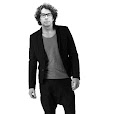The film signed by Robert Wiene under the suggestive title
of Cabinet of Doctor Caligari (Das Kabinett des Dr Caligari) is considered the
first horror film. His legacy in modern cinema is evident, but not only for
obvious reasons. While the most striking aspect of the film is the ingenious
avant-garde design of the sets (mise en scene), palpably unreal and theatrical,
in this revolutionary psychological thriller by director Robert Wiene, there
are other elements, more subtle, that have become habitual of cinematographic
narrative techniques. Architecturally speaking the film deals with issues of
representation like 2d and 3d, flatness and depth all in terms of the set
design.
Although the "unreliable narrator" was already
fundamental in literature (since the time of the Greek playwright
Aristophanes), it had not yet been used in cinema. The Cabinet of Dr. Caligari introduces
him with the character of Franzis (Friedrich Fehér). The story told by Franzis
begins with a love triangle in appearance quite innocent (two friends compete
for the love of the same woman), but of course, appearances deceive.
The writers, Hans Janowitz and Carl Mayer, initially wrote
the plot as a criticism of the attitude of the German government during the First
World War: Caligari is a villain who induces an innocent sleepwalker to commit
murder. However, during the production process, the story was drifting towards
something more complex and led to another first in the cinema: the unexpected
ending.
Janowitz and Mayer were inspired by a dark 11th-century
story about a trickster monk who exerts a mysterious influence on a man he
welcomes. In his script, the monk becomes a doctor, whom Franzis and his rival,
Alan (Hans Heinrich von Twardowski), meet at a town fair.
The strange Dr. Caligari (Werner Krauss) appears as a
showman who shows the ghostly Cesare (Conrad Veidt) lying inside his so-called
cabinet (actually, a coffin). Caligari, the "master" of Cesare,
assures that he "knows all the secrets" and invites the audience to
ask him anything. Alan, visibly upset, asks: How long will I live? To which
Cesare replies: Until dawn. Here is another resource of horror movies taken
from innumerable stories: the fool who tempts fate. The unfortunate Alan is
found dead the next morning.
The expressionist style
The aesthetics and style of the film were greatly influenced
by the legendary Max Reinhardt, director of the Deutsches Theater in Berlin.
His anti-realist style, inspired in turn by the expressionism of the early twentieth
century, combined the artificiality of the theatrical setting and the
manipulation of darkness (instead of light) to create chiaroscuro envelopes,
thus generating a mysterious and disturbing atmosphere.
Wiene uses lighting with astonishing ability to suggest that
we are only witnessing an extravagant melodrama, an idea reinforced by the
frequent and sinister close-ups, most of the supposedly insane Caligari, to
convince the public that he is seeing a story of good and evil . However, when
it becomes clear that the perspective of any character should not be taken
literally, the distorted backgrounds and angles begin to make sense. They do
not obey only a disturbing style, but are part of the plot: the sets of Walter
Reinmann, Walter Röhring and Hermann Warm seem to reflect a world gone mad.
One of the reasons for the prevalence of the film is that it
is the first that leads the public into the mind of a madman, anticipating
Hitchcock's psychosis. His horror reverberates in our own fear of the mask of
sanity with which even the most disturbed individuals can deceive us.
Robert Wiene Director
Born in 1873, in Breslau, Wiene wrote and directed in 1913
the short film Die Waffen von Jugend (The Weapons of Youth), the first of about
twenty films (long and short) that he made during the silent era. After a
prolific career in Germany, he fled the Nazi regime in the early 1930s and
settled in France. He died of cancer when he shot The Ultimatum (1938), and was
finished the also exiled Robert Siodmak.
Main films
1913 The weapons of youth.
1920 The Cabinet of Doctor Caligari
1923 Raskolnikov.
1924 The hands of Orlac.
s of strangeness,
irrationality, elements of a imaginary world where there is no sense, but that
reflects a very real feeling, such as sexual desire, when a woman's breasts are
seized, there is a rebellion to express her beliefs.

No comments:
Post a Comment